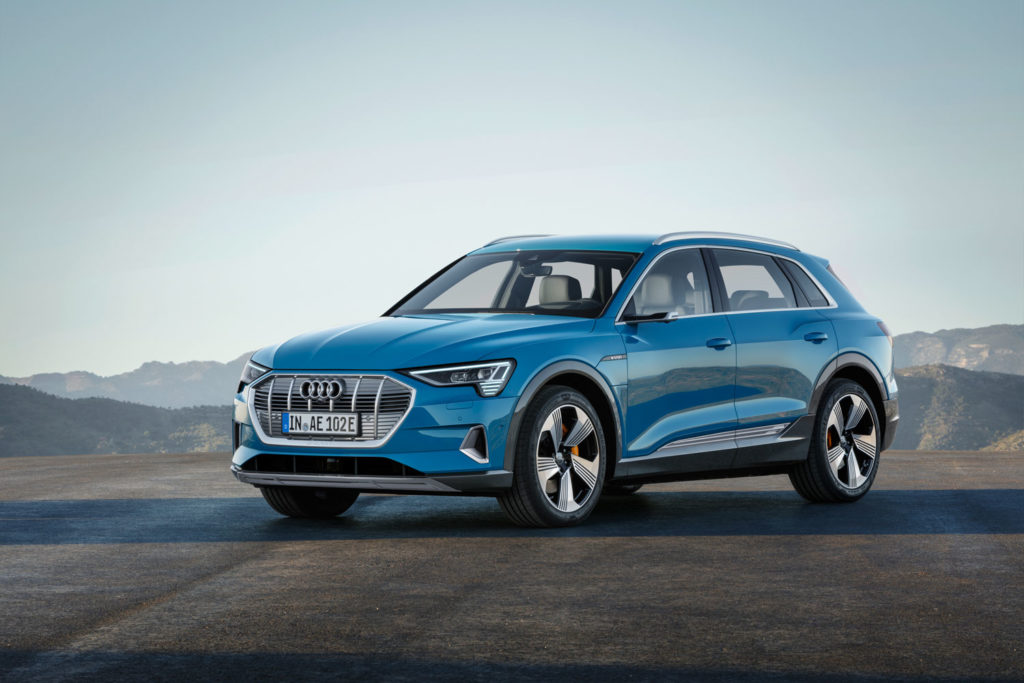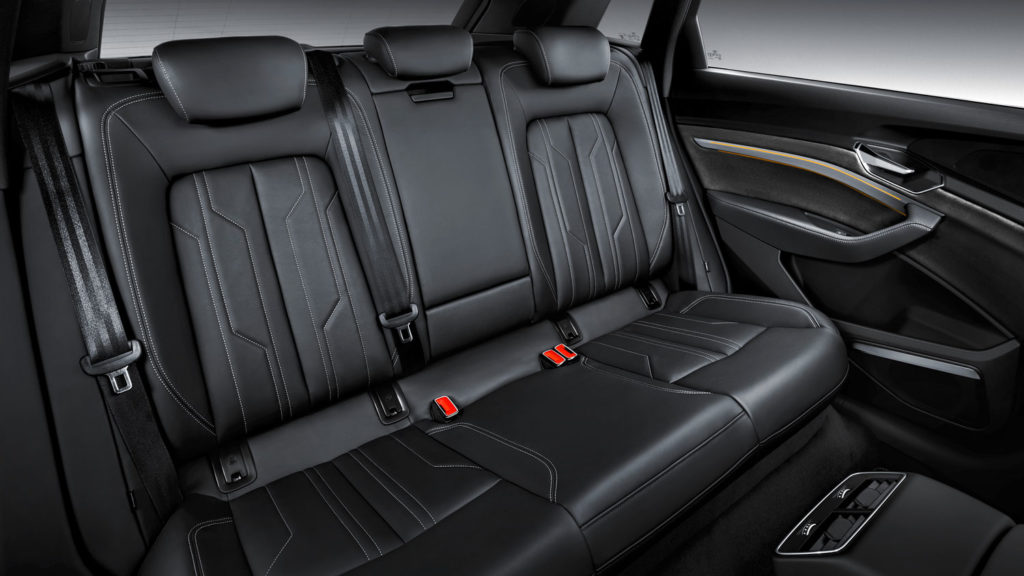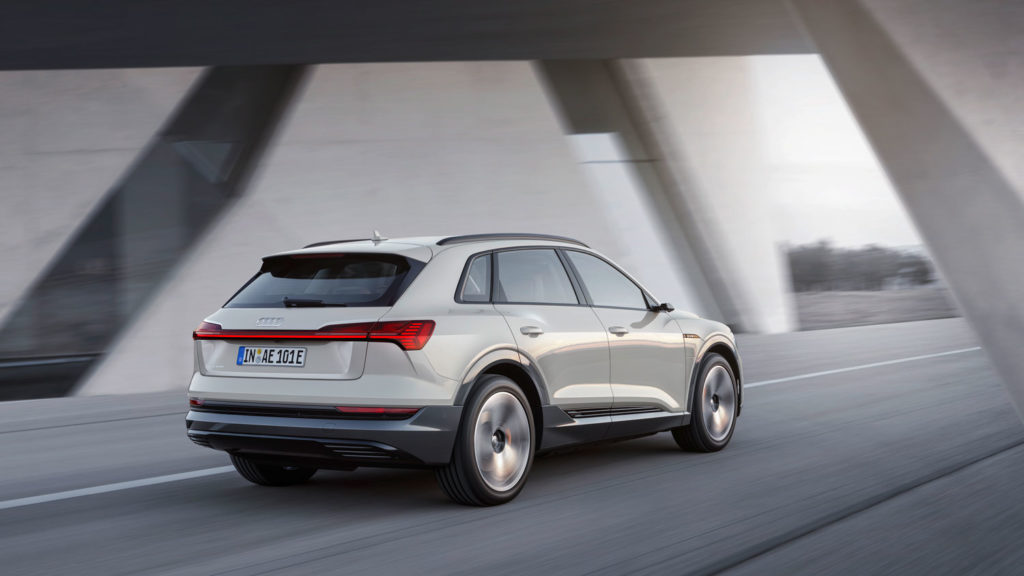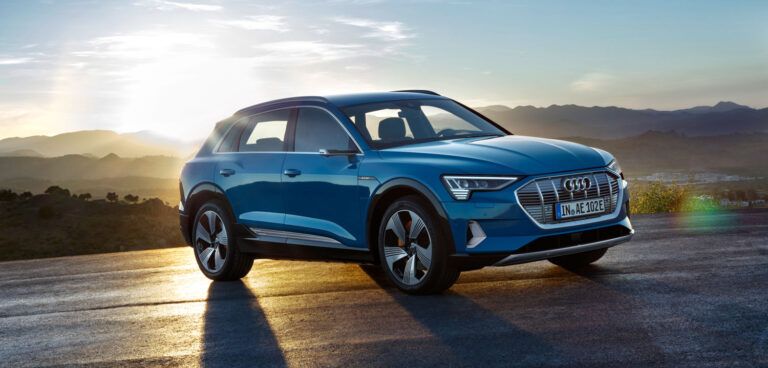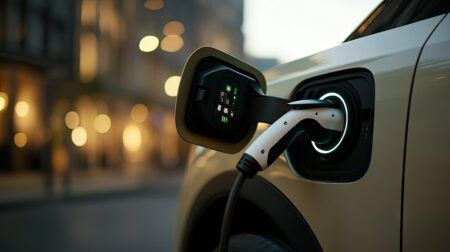Audi has officially launched its first all-electric series production Audi. The e-tron SUV made its debut in San Francisco, with the OEM claiming WLTP range figures of 248 miles (400km) for the vehicle, which is powered by front and rear electric motors.
The two e-motors produce a combined system output of up to 300kW (408ps) and 664Nm of torque. The e-tron will sprint from 0-60mph (0-97km/h) in 5.7 seconds, with an electronically limited top speed of 124mph (200km/h).
A new generation of Quattro technology – electric all-wheel drive – offers dynamic handling and performance on varying terrain and under a range of weather conditions, as the system continuously regulates drive between the two axles. For the most part, the vehicle will use the rear electric motor, with additional power demands met by the front.
The battery system is located between the axles in a flat block below the passenger compartment. This lowers the vehicle’s center of gravity to that of a typical saloon.
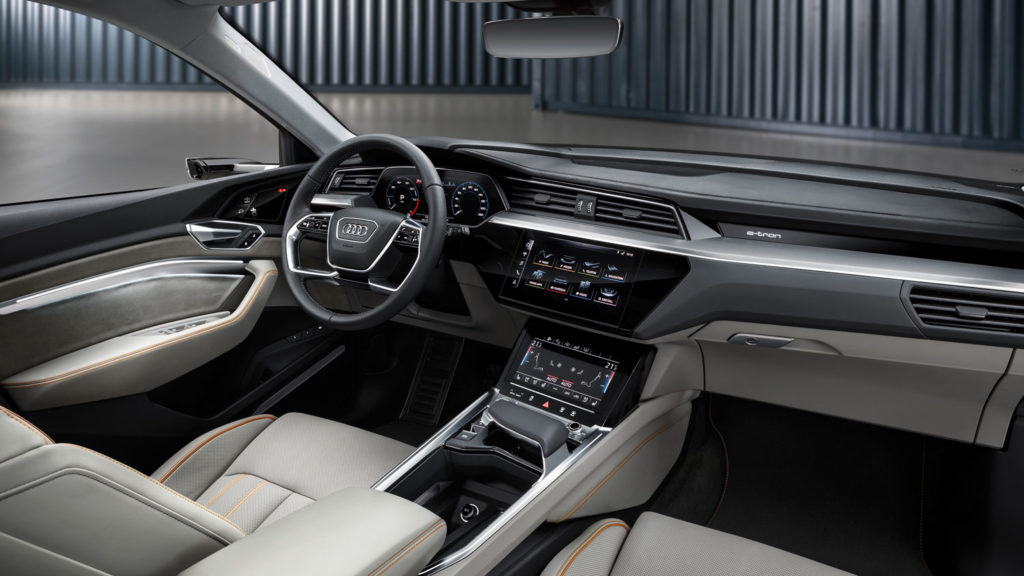 Axle load distribution is almost 50:50. Seven drives modes are available, while the e-tron will alter the standard air suspension with active dampers. Ride height will vary up to 76mm.
Axle load distribution is almost 50:50. Seven drives modes are available, while the e-tron will alter the standard air suspension with active dampers. Ride height will vary up to 76mm.
The e-tron features an innovative recuperation system, which is responsible for up to 30% of the range. The SUV can recover energy in two ways: via coasting recuperation when the driver releases the accelerator, or by braking recuperation when the brake pedal is depressed.
In both cases, the electric motors function as a generator and convert the kinetic energy into electric energy. At up to 0.3g of deceleration, the electric SUV recuperates solely via the electric motors. This is the case well over 90% of the time. The wheel brakes are involved only when the driver decelerates by more than 0.3g using the brake pedal.
Depending on the driving situation, the electrohydraulically integrated brake control system decides whether the SUV will use the electric motor, the wheel brake or a combination of the two acting on each axle individually for recuperation.
When equipped with the virtual exterior mirrors (available as a high-end option), the e-tron achieves a Cd value of 0.27. With a typical use profile, that drag coefficient provides for a range advantage of approximately 25 miles (40km) per battery charge versus a comparable, conventionally powered vehicle.
Orders for the e-tron will open in early 2019.
